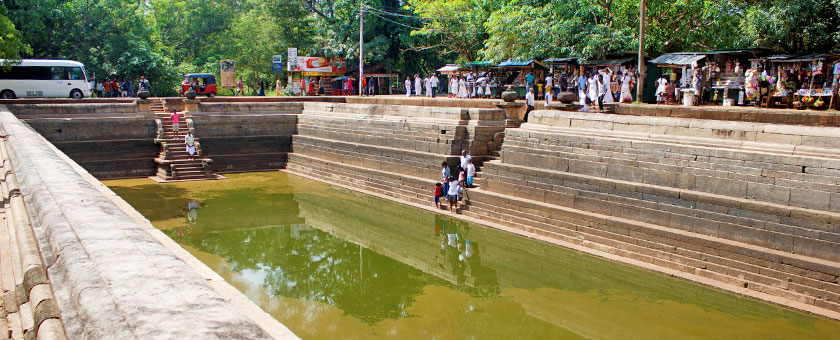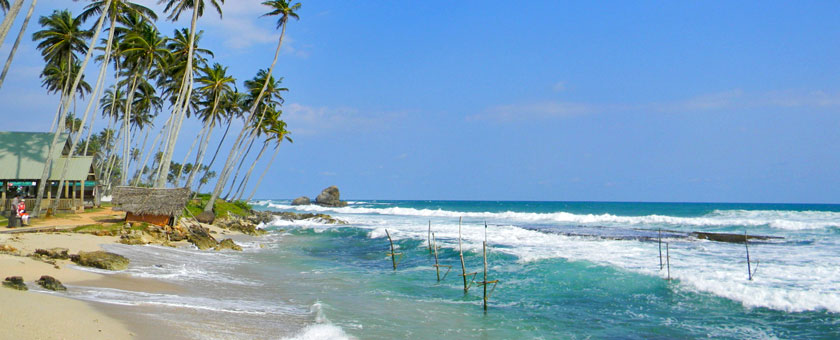203 786 2345 office@eturia.com
Located in the Indian Ocean in southern Asian continent, Sri Lanka has a rich history that dates from ancient times. Few places in the world can offer such a remarkable combination of wonderful natural landscapes, untouched beaches and a captivating cultural heritage – Sri Lanka is the place where pure Buddhist religion is preserved with holiness.
Name: Sri Lanka (Democratic Socialist Republic of Sri Lanka)
Capital: Colombo
Location: Southern Asia, island in the Indian Ocean, south of India
Main towns: Sri Jayawardenepura Kotte, Dehiwala-Mount Lavinia, Moratuwa, Negombo, Kandy, Kalmunai, Vavuniya, Galle, Trincomalee, Dambulla
Currency: Sri Lankan rupee – LKR
Timezone: UTC+5:30 (SLST)
Tipping: Tipping is generally expected in Sri Lanka in all of the circumstances.
Remember that a 10% service surcharge is usually added to food bills and accommodation bills in the larger establishments, so any further investment should represent reward for good service. In small local places, however, it’s not normally included so if you’ve had good service, do leave a small tip – anything up to RS50. Tipping hotel staff in Sri Lanka is expected if you stay in a small hotel or villas. Giving a collective tip is fine – usually. Rs1000 – 1500 per day is a good guide. Guides – a good rough estimate is RS 400-500 an hour. A driver or chauffeur guide can be tipped Rs2000-2500 a day for good service. You can give this to them at the end of each day, or you can give it to them in total at the end of your holiday.
Voltage: Network parameters: 230 V / 50 Hz; D, G socket is used, you need adapters.
The tropical island of Sri Lanka has 8 sites declared UNESCO World Heritage, 1330 km of coastline, 15 national parks, over 500,000 acres of tea plantations, 250 acres of botanical gardens, 350 waterfalls and a culture starting 2500 years. Adding to all this the hospitality of the inhabitants you will discover the recipe for an ideal holiday.
Sri Lanka is a multi-ethnic, multi-religious and multi-cultural country due to successive waves of merchants, adventurers and settlers who have come here since the earliest times attracted by the richness of this land.
Must see:
In general, Sri Lanka is a destination that can be approached at any time of the year, differentiation being made on the areas and the purpose of the trip. From the precipitation point of view, the best season to visit Sri Lanka is from November and April to the west and south; from May to September in the eastern and central areas (Anuradhapura, Polonnaruwa, Kandy, Mihintale). March and April are the months with the lowest rainfall in the whole country and from June to September the highest temperatures are encountered. The wettest period is September – October when rainfall is high throughout the island.
 The capital of Sri Lanka, Colombo is the main economic and cultural center and the largest city in the country. The city is located on the west coast of the island about 10 km from Sri Jayawardenapura Kotte, where the Parliament of Sri Lanka is located. Occupying a strategic position at the intersection of maritime trade routes and thanks to its port, Colombo has developed across time.
The capital of Sri Lanka, Colombo is the main economic and cultural center and the largest city in the country. The city is located on the west coast of the island about 10 km from Sri Jayawardenapura Kotte, where the Parliament of Sri Lanka is located. Occupying a strategic position at the intersection of maritime trade routes and thanks to its port, Colombo has developed across time.
 Considered a sacred city in the Buddhist world, Anuradhapura is included in the UNESCO World Heritage List, the ancient city being surrounded by numerous monasteries, various other religious buildings, palaces, pavilions, lakes surrounded by splendid gardens, most of which are true architectural works.
Considered a sacred city in the Buddhist world, Anuradhapura is included in the UNESCO World Heritage List, the ancient city being surrounded by numerous monasteries, various other religious buildings, palaces, pavilions, lakes surrounded by splendid gardens, most of which are true architectural works.
 Galle is an example of the military constructive techniques of the colonial era. The British colonial period is highlighted by the purest mansions British: Closenburg, Eddystone, Barthfield, Armitage Hill or Nooit-Gedacht. The development as a port city began as early as 1505 when the navigator Lourenco de Almeida arrived with the ships in this area, knowing new periods of bloom in 1640 and then in 1796.
Galle is an example of the military constructive techniques of the colonial era. The British colonial period is highlighted by the purest mansions British: Closenburg, Eddystone, Barthfield, Armitage Hill or Nooit-Gedacht. The development as a port city began as early as 1505 when the navigator Lourenco de Almeida arrived with the ships in this area, knowing new periods of bloom in 1640 and then in 1796.
 The historical area of the city is in fact a complex that includes the former royal buildings, the Royal Palace and a suite of temples including Lankatilakaka and Gadaladeniya, the Udawatta Kele sanctuary and the Kandy National Museum. In the Temple of Dalada Maligawa, the remains of a Buddha-owned tooth are preserved.
The historical area of the city is in fact a complex that includes the former royal buildings, the Royal Palace and a suite of temples including Lankatilakaka and Gadaladeniya, the Udawatta Kele sanctuary and the Kandy National Museum. In the Temple of Dalada Maligawa, the remains of a Buddha-owned tooth are preserved.
 The park area also hosts numerous archaeological sites that are evidence of the existence of ancient civilizations, two of them Sithulpahuwa and Vihara Magus being found right inside the park. The park is made up of 9 ecosystems that contain special species of flora and fauna typical of the island, many of them endemic (including 44 mammalian species, 46 reptile species, 18 amphibian species, 21 species of fish, 90 bird species).
The park area also hosts numerous archaeological sites that are evidence of the existence of ancient civilizations, two of them Sithulpahuwa and Vihara Magus being found right inside the park. The park is made up of 9 ecosystems that contain special species of flora and fauna typical of the island, many of them endemic (including 44 mammalian species, 46 reptile species, 18 amphibian species, 21 species of fish, 90 bird species).